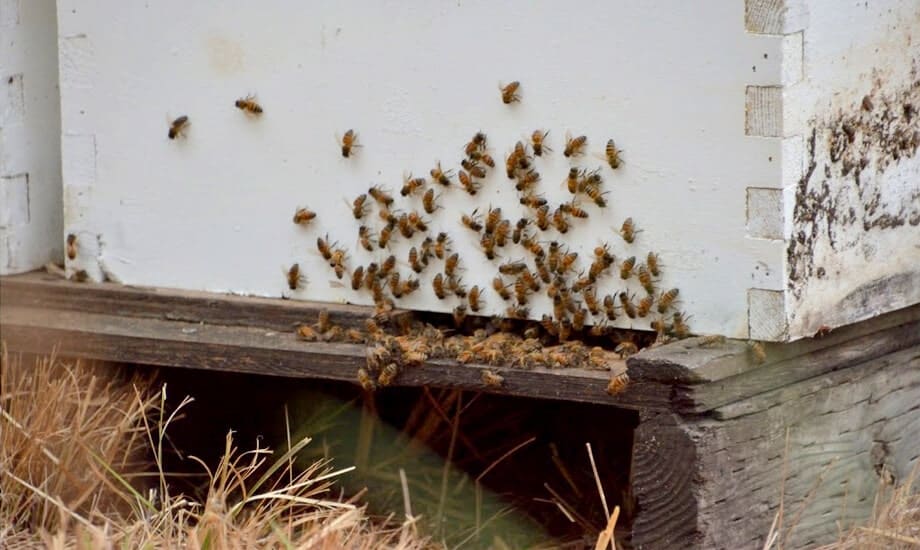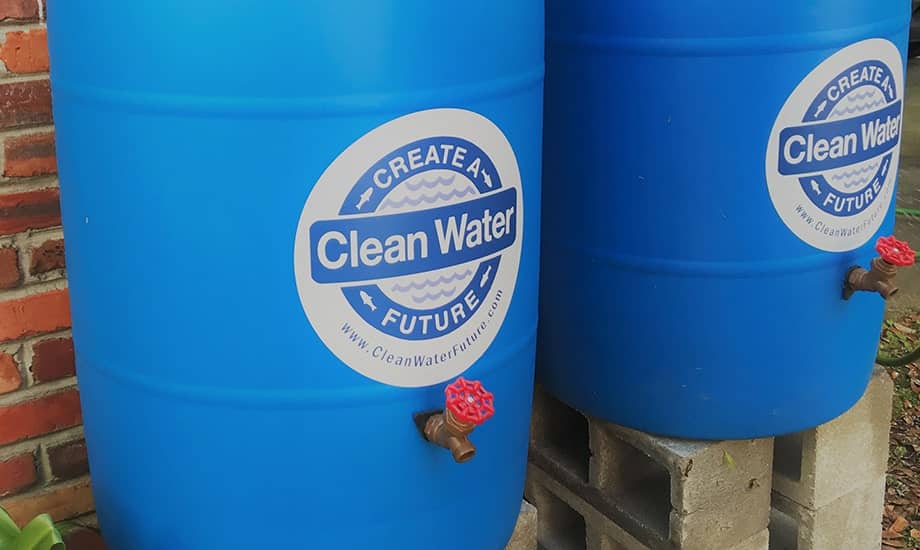Por qué es importante la biodiversidad
Greif se centra en la biodiversidad para ayudar a preservar un medio ambiente saludable. Al tomar medidas para comprender y gestionar los posibles impactos de nuestras operaciones en los servicios ecosistémicos y la biodiversidad, nos posicionamos para preservar los recursos naturales. A través de nuestras operaciones y servicios de gestión de tierras, nos dedicamos a conservar la biodiversidad y las funciones ecosistémicas de la Tierra para promover la restauración de la vida silvestre y el hábitat.
Gobernancia
244,600
Acres bajo gestión
Practicamos la silvicultura sustentable en nuestras operaciones en Alabama, Luisiana y Mississippi y ofrecemos servicios para mejorar las prácticas de gestión de la tierra en todas las industrias.
Desde diciembre de 2008, Soterra, LLC, nuestra subsidiaria dedicada a la gestión de tierras, se ha adherido a los principios de la Iniciativa Forestal Sostenible (SFI, por sus siglas en inglés) y ha seguido las Mejores Prácticas de Gestión definidas por cada estado para sus tierras forestales gestionadas. Los bosques de Soterra proporcionan hábitat forestal para la vida silvestre, servicios de gestión forestal y sirven como espacio para el uso recreativo de la tierra. Soterra opera en el sureste de los Estados Unidos y gestiona 244.600 acres de tierras forestales en Alabama, Luisiana y Misisipi. En 2020, los bosques de Soterra capturaron más de 1.705.000 toneladas de CO2.
EspañolLas prácticas de manejo recomendadas de SFI y específicas de cada estado guían las prácticas de cosecha y silvicultura general de Soterra para garantizar que cumplamos con todos los requisitos reglamentarios y apliquemos las prácticas estándar más estrictas en todas nuestras operaciones siempre que sea posible. Aplicamos una metodología de cosecha sustentable basada en una rotación de 30 años en nuestras tierras forestales. Antes de cosechar en cualquier sitio, realizamos una revisión exhaustiva del área para evaluar el valor general de la biodiversidad del sitio e identificar cualquier especie animal o vegetal protegida que pueda verse afectada por la cosecha. Si se identifica que alguna área dentro de un sitio tiene un alto valor de biodiversidad o sirve como hábitat para una especie protegida, se establecen zonas de amortiguación adecuadas para garantizar que la especie no se vea afectada y, si es necesario, se modificarán los métodos de preparación y cosecha en consecuencia. Hasta la fecha, no se ha identificado ninguna tierra administrada por Soterra con un alto valor de biodiversidad; sin embargo, desde 2008, se han identificado nueve especies de interés dentro de nuestras áreas geográficas y se han protegido cuando es necesario. En 2020, la serpiente de pino negra fue designada recientemente como una especie de interés en las propiedades administradas por Greif.
Trabajamos para mejorar nuestras prácticas de gestión de tierras a través de la tecnología siempre que sea posible. En 2007, comenzamos a implementar sistemas de información geográfica para realizar un seguimiento de nuestras actividades de plantación, mantenimiento y cosecha, y a utilizar tecnología de drones para evaluar de manera más eficiente y segura la salud de nuestros bosques. Continuamos ampliando estos esfuerzos en 2020 para respaldar una mejor preparación del sitio para la cosecha y evaluar posibles brotes de plagas. Hasta la fecha, nuestros pilotos de drones han mapeado más de 100,000 acres de tierras de la empresa y privadas.
En 2020, nuestros servicios de consultoría siguieron creciendo y nos ayudaron a regenerar y plantar árboles en más de 18 000 acres en total plantados en tierras privadas desde 2016. Seguimos trabajando con los propietarios de tierras para implementar prácticas responsables de gestión de tierras y organizando jornadas de campo socialmente distanciadas con asociaciones de propietarios de tierras, centrándonos en brindar educación sobre genética de plántulas, mejores prácticas de reforestación y aprovechar la tecnología de drones.
En 2021, continuaremos diversificando nuestros servicios para mantener nuestra capacidad de operar nuestro negocio con prácticas sustentables, incluida una iniciativa para plantar un árbol por cada milla recorrida por nuestro equipo de gestión de tierras y días de voluntariado para que nuestros colegas interactúen con las comunidades en las que trabajan. Continuaremos mejorando nuestras prácticas de gestión de tierras y evaluando técnicas para respaldar un mayor secuestro de carbono a fin de compensar la huella de carbono general de Greif.
Estudio de mejora del hábitat de los polinizadores
El año 2013 marcó la conclusión de un proyecto de investigación de varios años sobre polinización que se llevó a cabo en los bosques de Greif/Soterra LLC en el sur de Mississippi. El estudio se llevó a cabo en conjunto con Pollinator Partnership y NAPCC (los principales expertos mundiales en temas de polinización) para aprender cómo los polinizadores afectan la disponibilidad de alimentos para la vida silvestre en los paisajes forestales, el valor agregado de albergar abejas melíferas y apicultores en el paisaje y para descubrir la mejor práctica de gestión de los servicios ecosistémicos en los paisajes forestales.
El estudio produjo algunas recomendaciones interesantes para prácticas de gestión sostenible de tierras forestales que deberían beneficiar a los propietarios de tierras forestales, a las especies polinizadoras, a la vida silvestre local y a los ecosistemas por igual. Greif está comprometido con su plataforma de uso sostenible de la tierra y ayudará a distribuir las publicaciones resultantes a socios de la industria, reguladores y miembros de la comunidad académica a nivel mundial para influir en la gestión ambiental positiva en los sistemas de tierras forestales.
En 2013, la Iniciativa Forestal Sostenible (SFI) reconoció a Soterra LLC y a la Asociación de Polinizadores con su codiciado Premio al Liderazgo en Conservación por esta investigación. El estado de Luisiana también reconoció los esfuerzos del programa al declarar una Semana de los Polinizadores a nivel estatal en la primavera de 2018. A partir de 2021, Soterra LLC continúa su apoyo a la educación, la divulgación, la conservación y la investigación científica relacionada con la importancia de los polinizadores en nuestro ecosistema al mantener su participación en la Asociación de Polinizadores como miembro activo de la Junta Directiva. Para obtener más información, consulte nuestro artículo en

El programa de barriles de lluvia recibe el premio a la gestión ambiental
En 2018, Soterra estableció una asociación con el Programa Nacional de Estuarios para utilizar bidones donados por Greif para recolectar agua de lluvia. A través del programa, cada bidón está equipado con un kit de conversión de barril de lluvia para ayudar a almacenar, capturar y aprovechar el agua de lluvia. Los barriles se instalan en áreas empobrecidas con costos de servicios públicos históricamente altos que también son propensas a inundaciones y contaminación del agua asociada con la escorrentía excesiva de agua. Para fines de 2021, se instalarán en la comunidad 200 bidones capaces de proporcionar 260,000* galones de agua. En 2019, recibimos un premio de Gestión Ambiental de Partners for Environmental Progress en reconocimiento al programa.
*Según la Agencia de Protección Ambiental de los Estados Unidos, un barril de lluvia ahorra 1.300 galones de agua durante los meses pico del verano.






